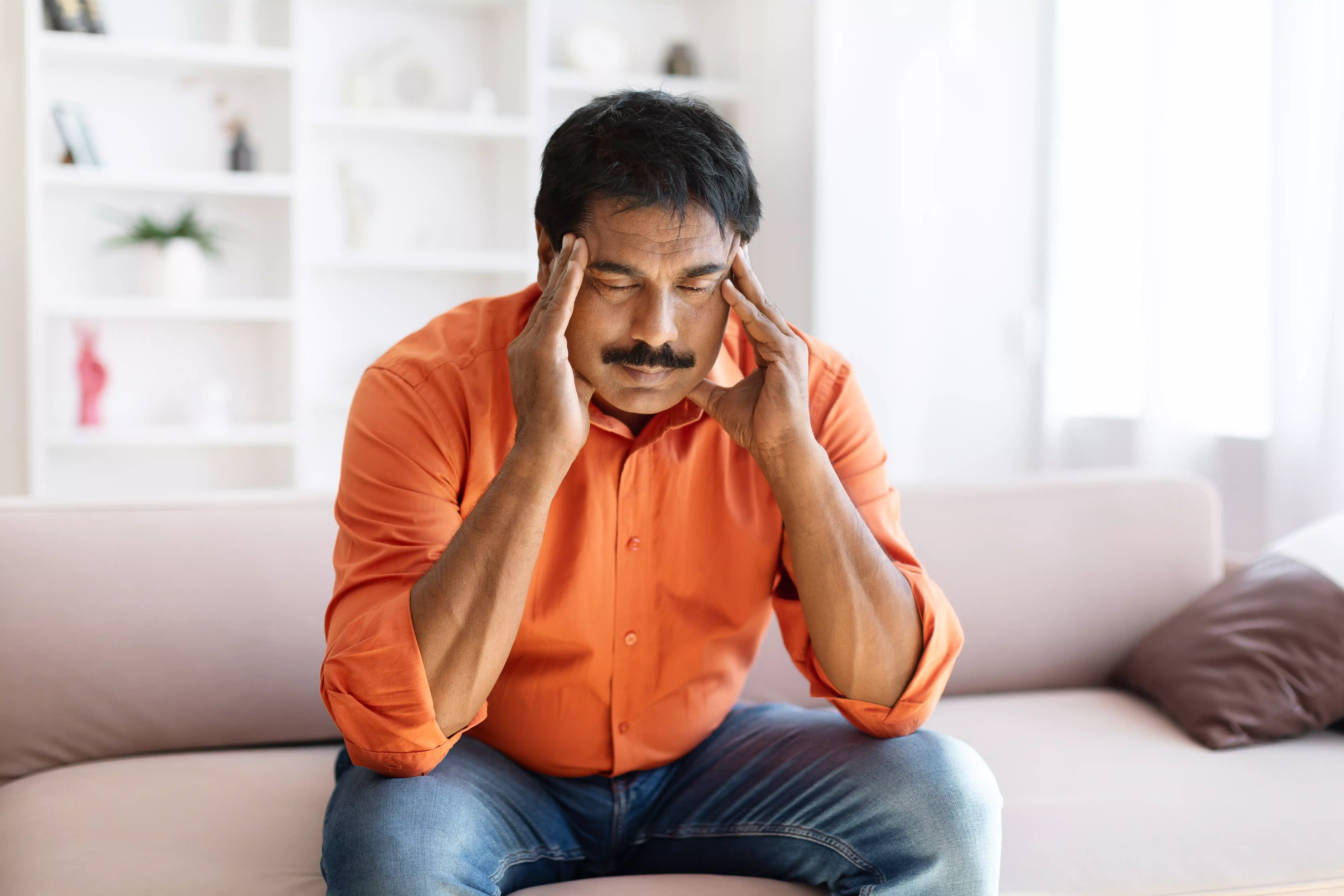
What is Migraine?
Migraine is an intense, pulsating headache that occurs on one side of the head and is accompanied by symptoms such as nausea, vomiting, and sensitivity to light and sound. The symptoms usually become more severe when participating in physical activities. The pain may radiate from your forehead, go from one side of your head to the other, or feel as though it is affecting your head. If not treated, the pain from migraines can last for hours to days, and its frequency varies from person to person. There are four phases to the development of migraine, and the body experiences different symptoms at each step. A migraine attack can occur at any time during childhood or adulthood. Ayurveda presents comprehensive strategies to address migraines, utilising herbal remedies, dietary modifications, and lifestyle changes for long-lasting relief. The goal of Ayurveda is to address imbalances and promote overall well-being to alleviate migraines and prevent future episodes.

Ayurveda's Role in Coping with Migraine
Ayurveda states that migraines are mainly caused by dosha imbalances. Ayurveda provides a range of potential remedies for treating migraines. What sets these remedies apart is their emphasis on addressing the root cause. Ayurveda uses a thorough evaluation of factors like individual constitution, dosha imbalances, lifestyle, and emotions to diagnose migraines. To determine the root causes of a Migraine headache, a skilled Ayurvedic practitioner will carefully evaluate these factors and create a customised treatment strategy.
In Ayurveda, it is believed that an imbalance in tridosha leads to the development of migraines. Imbalances in Vata, Pitta, and Kapha doshas can lead to serious issues in the body's digestive and nervous systems. Our goal at Ayur Bethaniya Ayurveda Hospital is to identify the underlying cause of any ailment and provide tailored treatment for a safe and complete recovery, while also preventing future occurrences of the condition. Identifying the underlying cause of a disease is crucial for developing an effective treatment plan that restores balance and harmony in the body.
Different symptoms associated with migraines can be observed when there is an imbalance in each dosha. Properly evaluating symptoms aids in understanding dosha aggravation and taking measures to pacify them. The Ayurvedic treatment for Migraine incorporates herbal oils, massage, and specific Panchakarma techniques (such as Nasya, Snehapana, and Virechana) to purify the body and balance the doshas. Complete relief and recovery from migraines involve incorporating treatment procedures, dietary changes, lifestyle modifications, and Yoga into the routine schedule.
A key part of dietary changes is to avoid food that can aggravate doshas, in order to restore balance and stability in the body. Under the guidance of a qualified instructor, various yoga asanas and pranayamas are taught to address imbalances leading to migraines and boost oxygen supply to the brain. At Ayur Bethaniya, we specialise in creating customised treatment plans for individuals suffering from chronic migraines. Our Ayurvedic herbal formulas and medicines are safe, effective, and free from any adverse reactions


